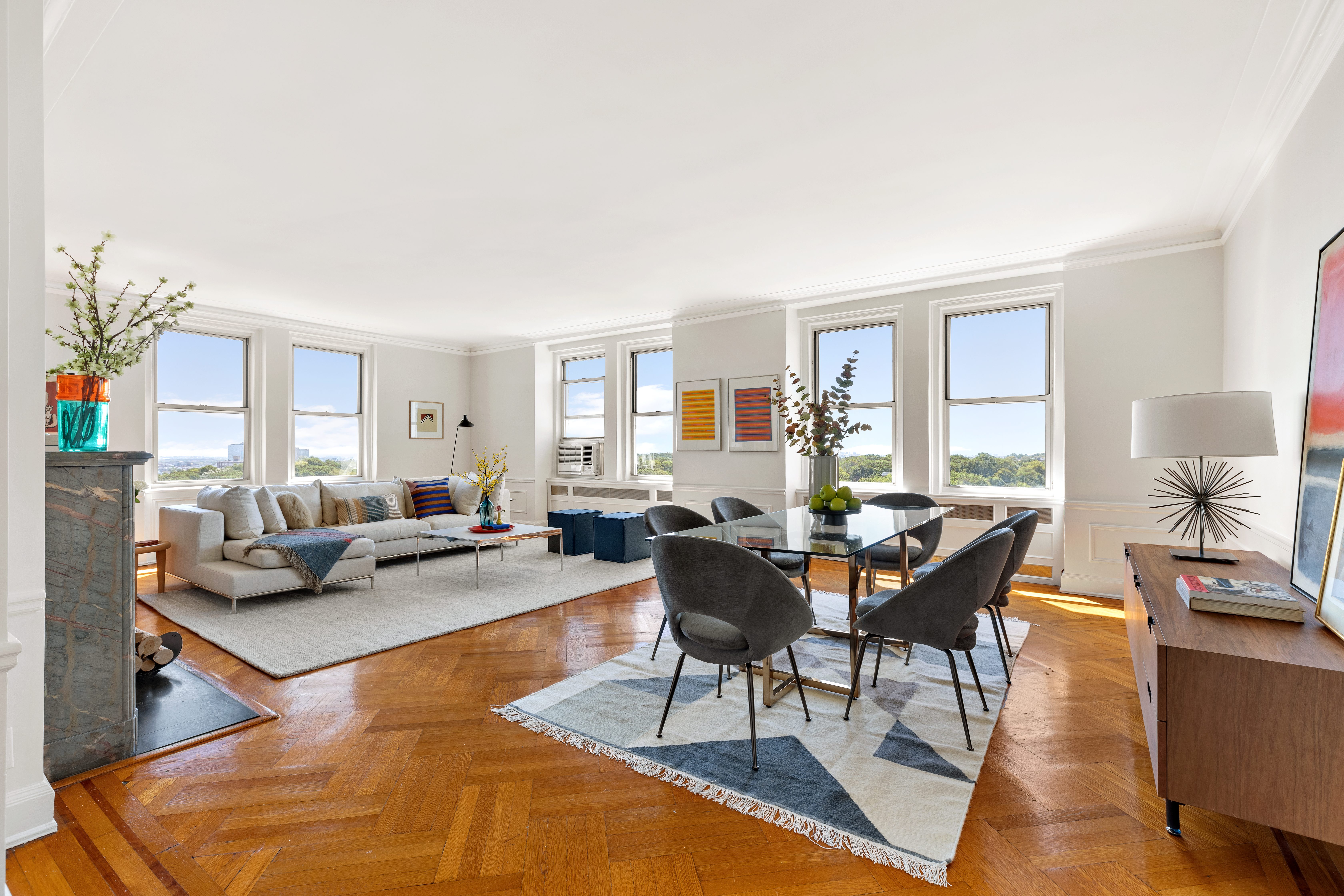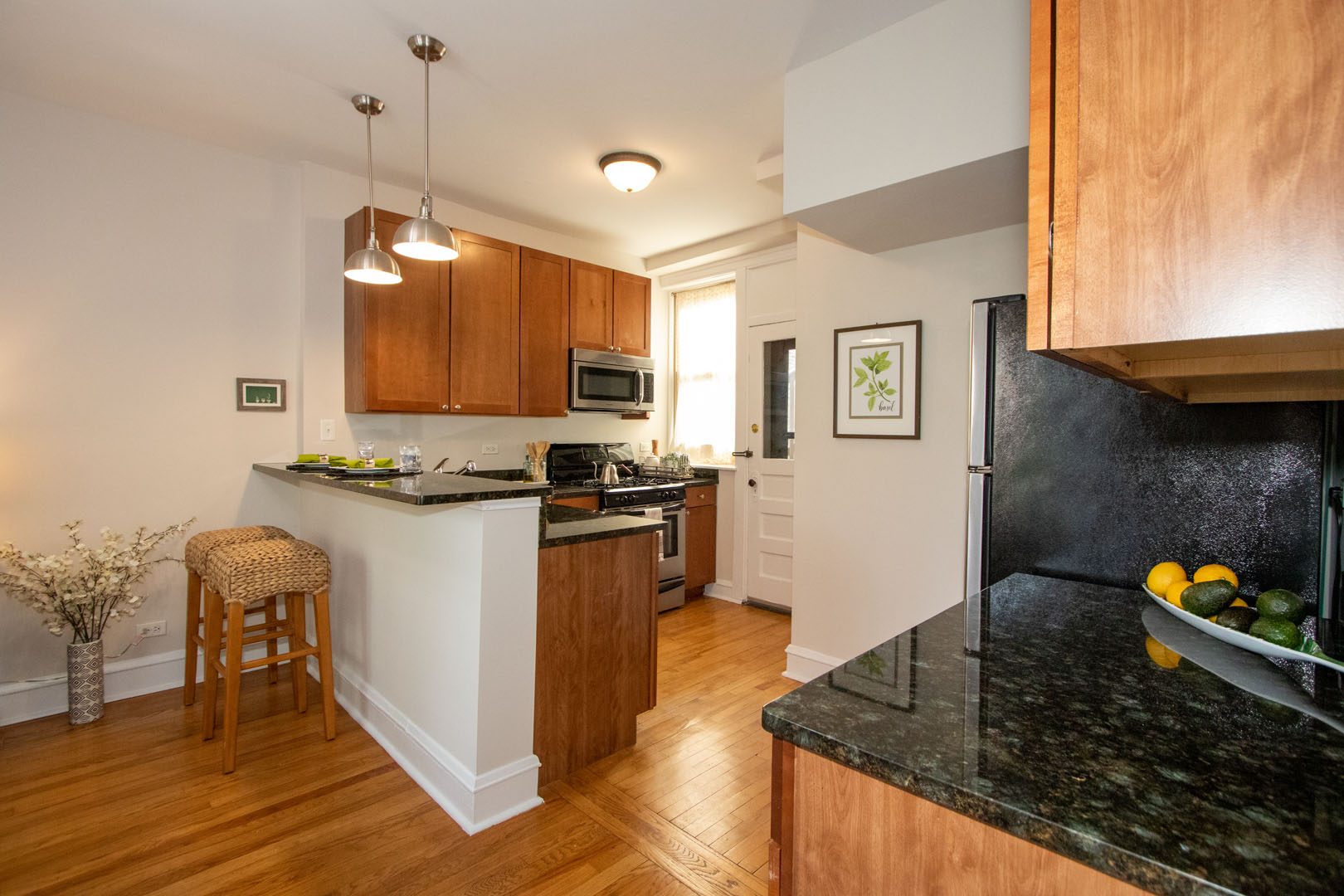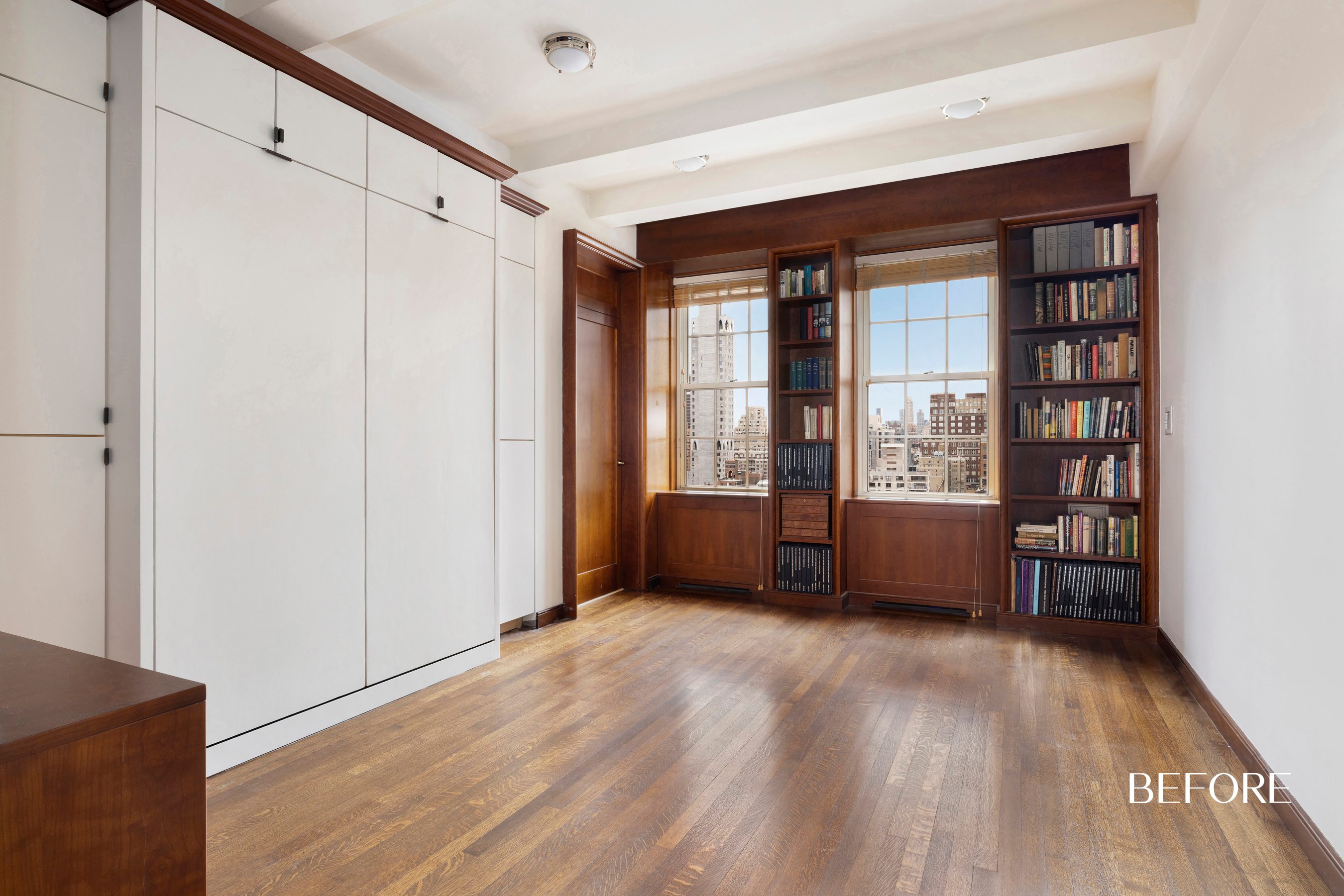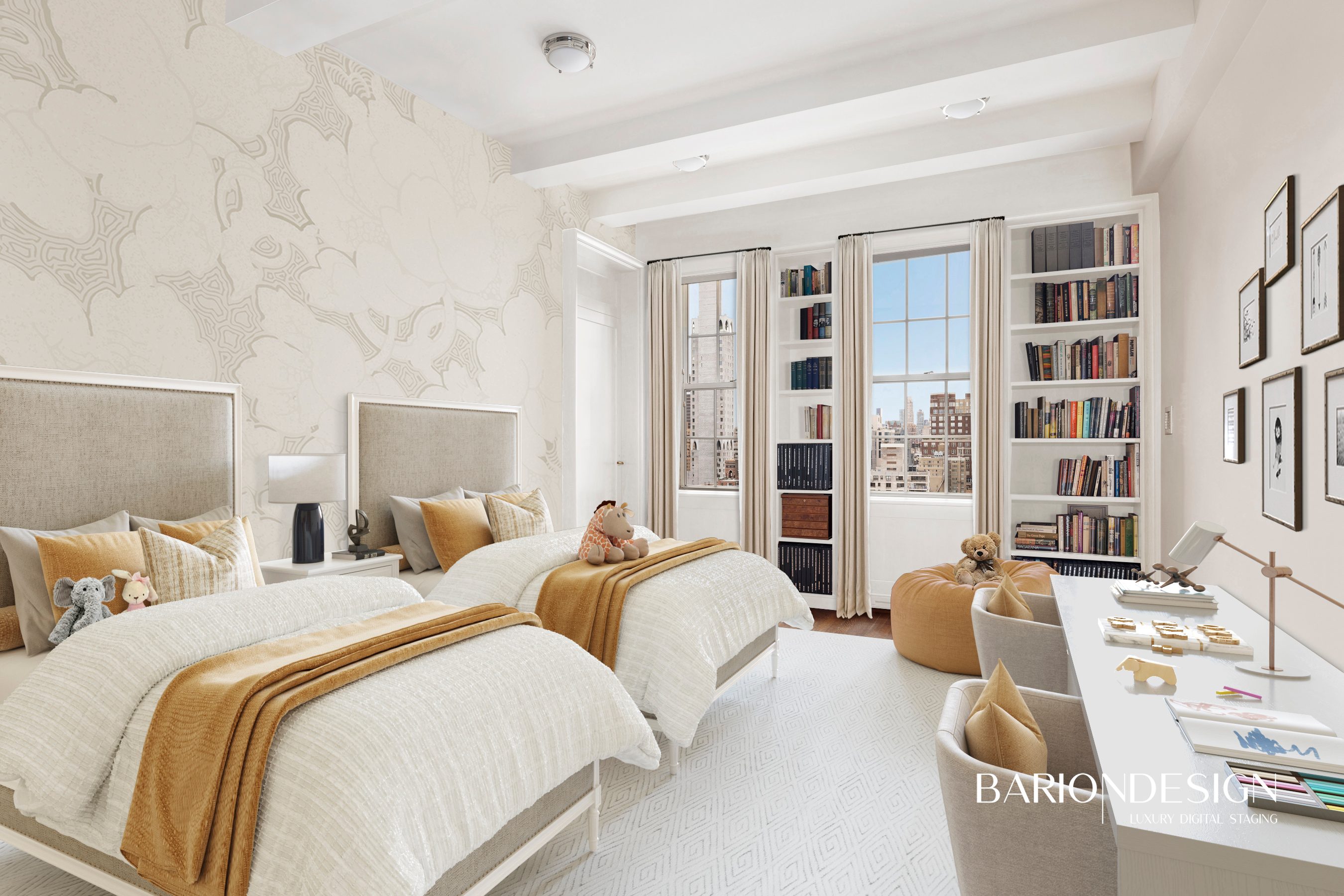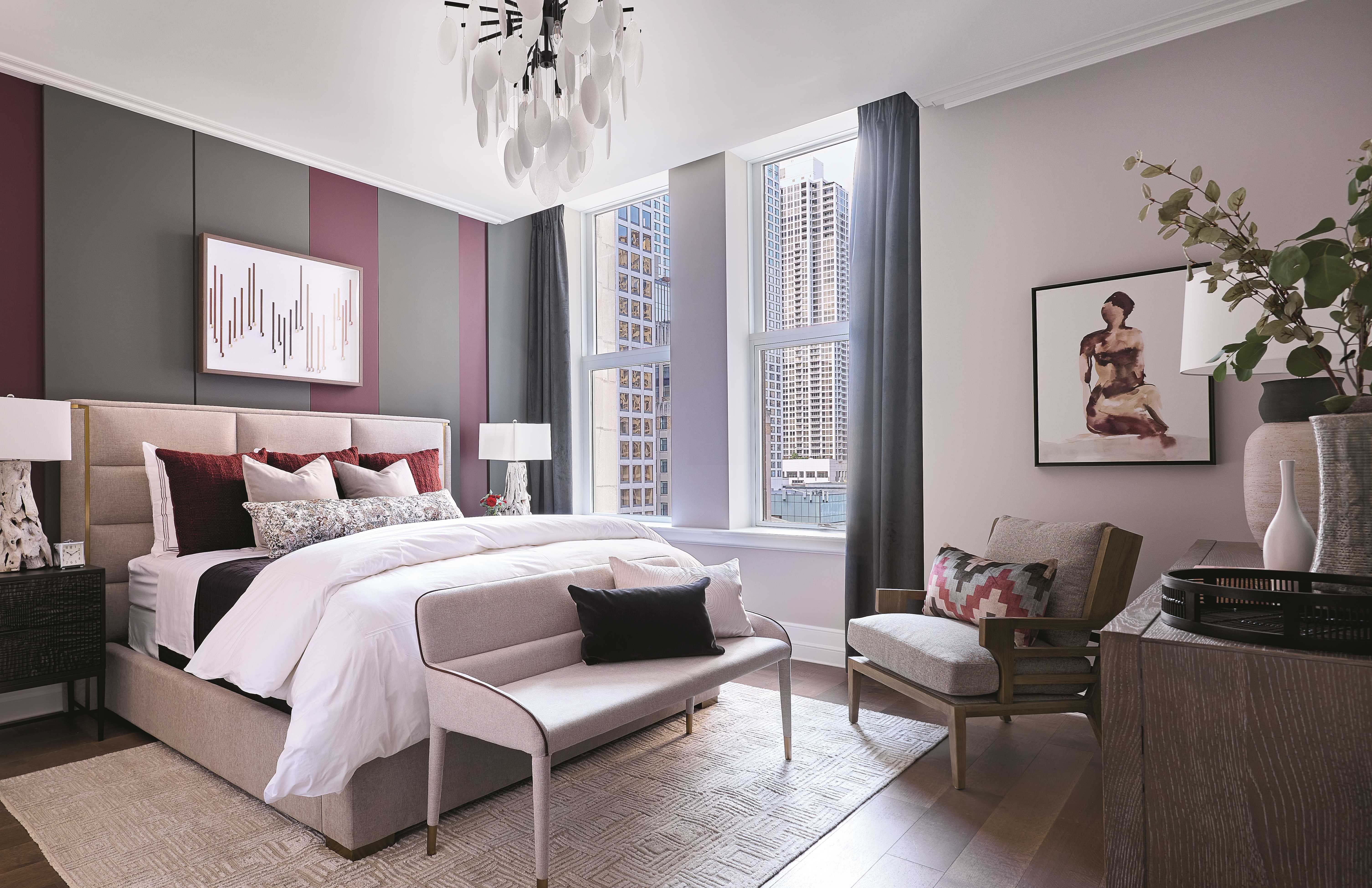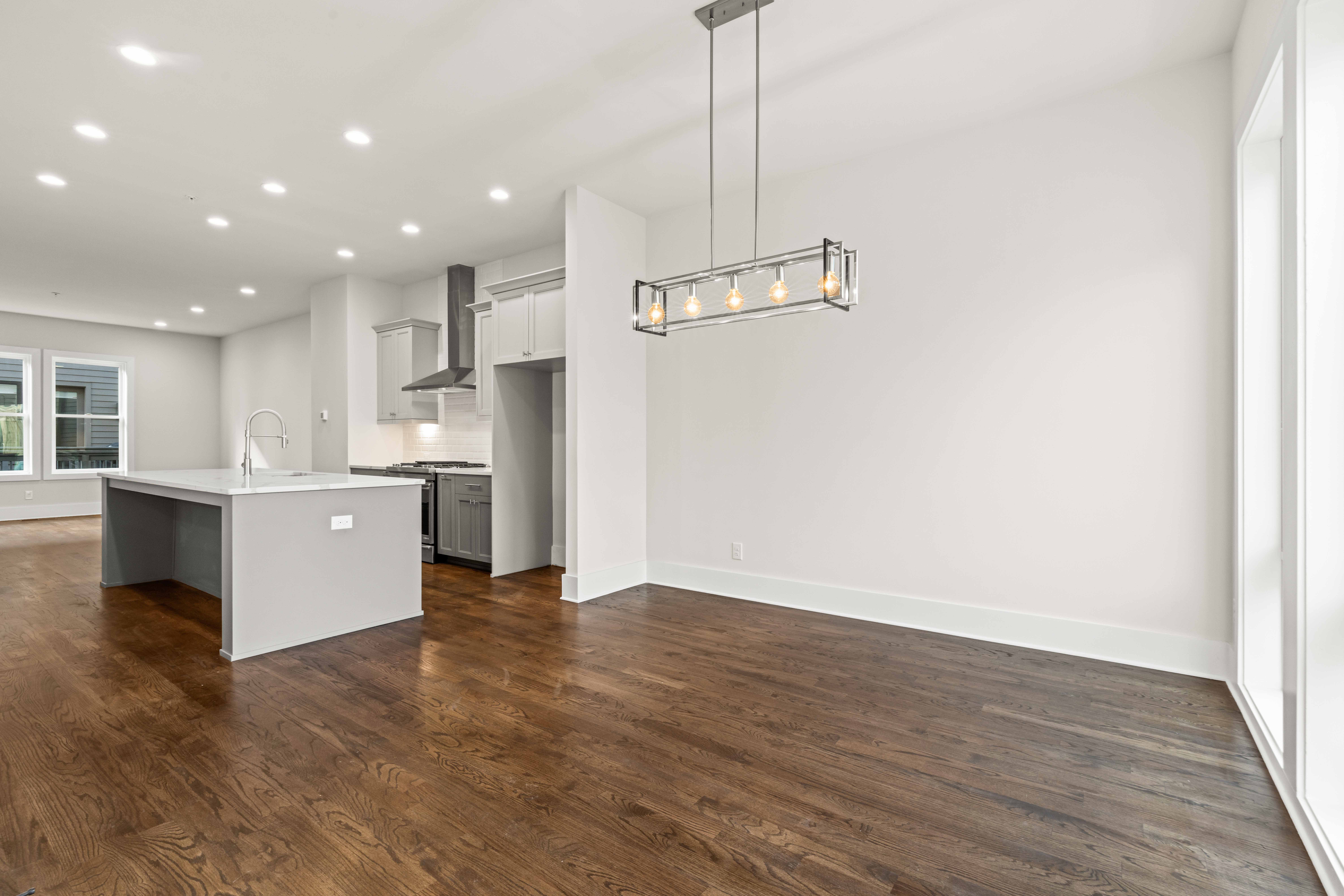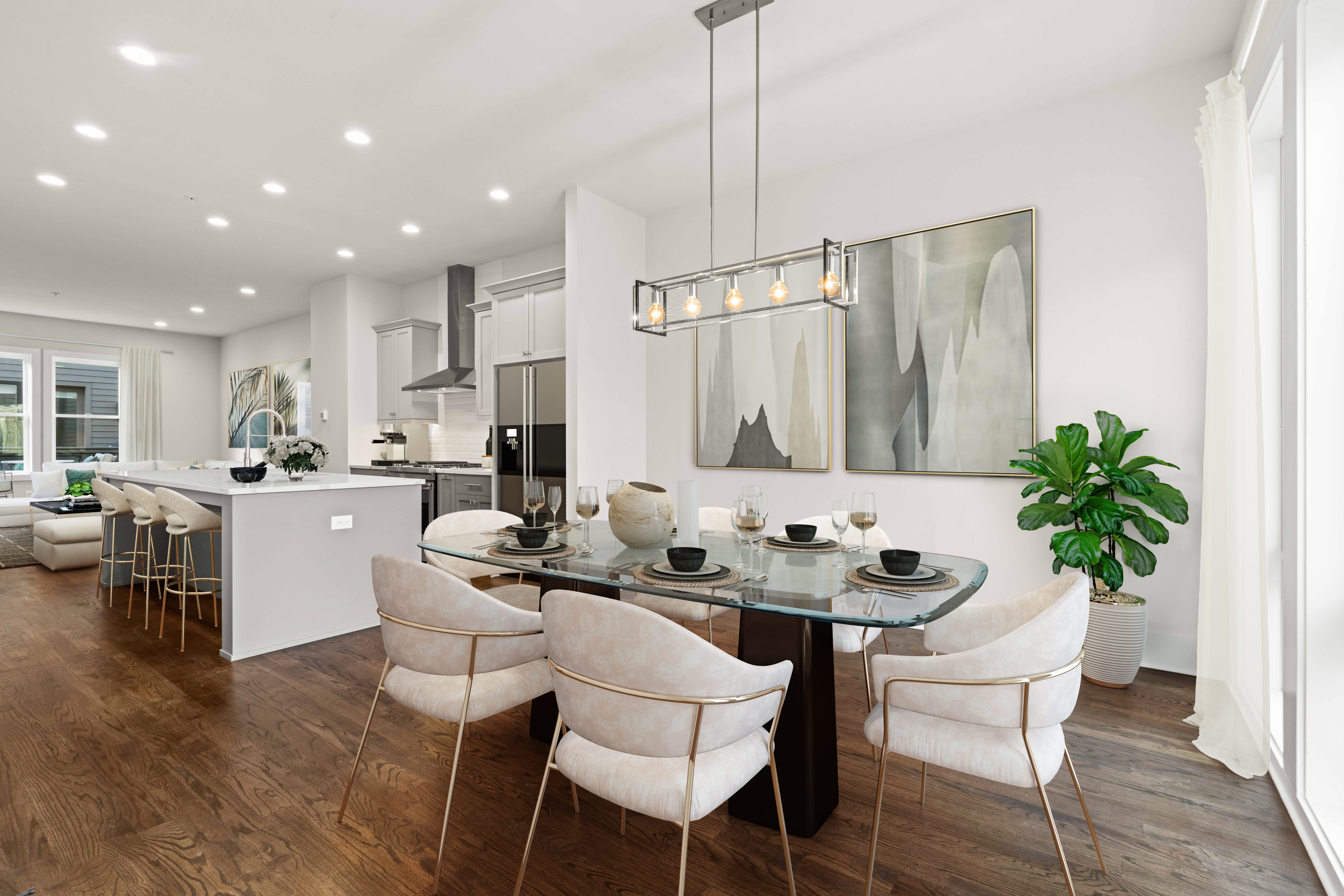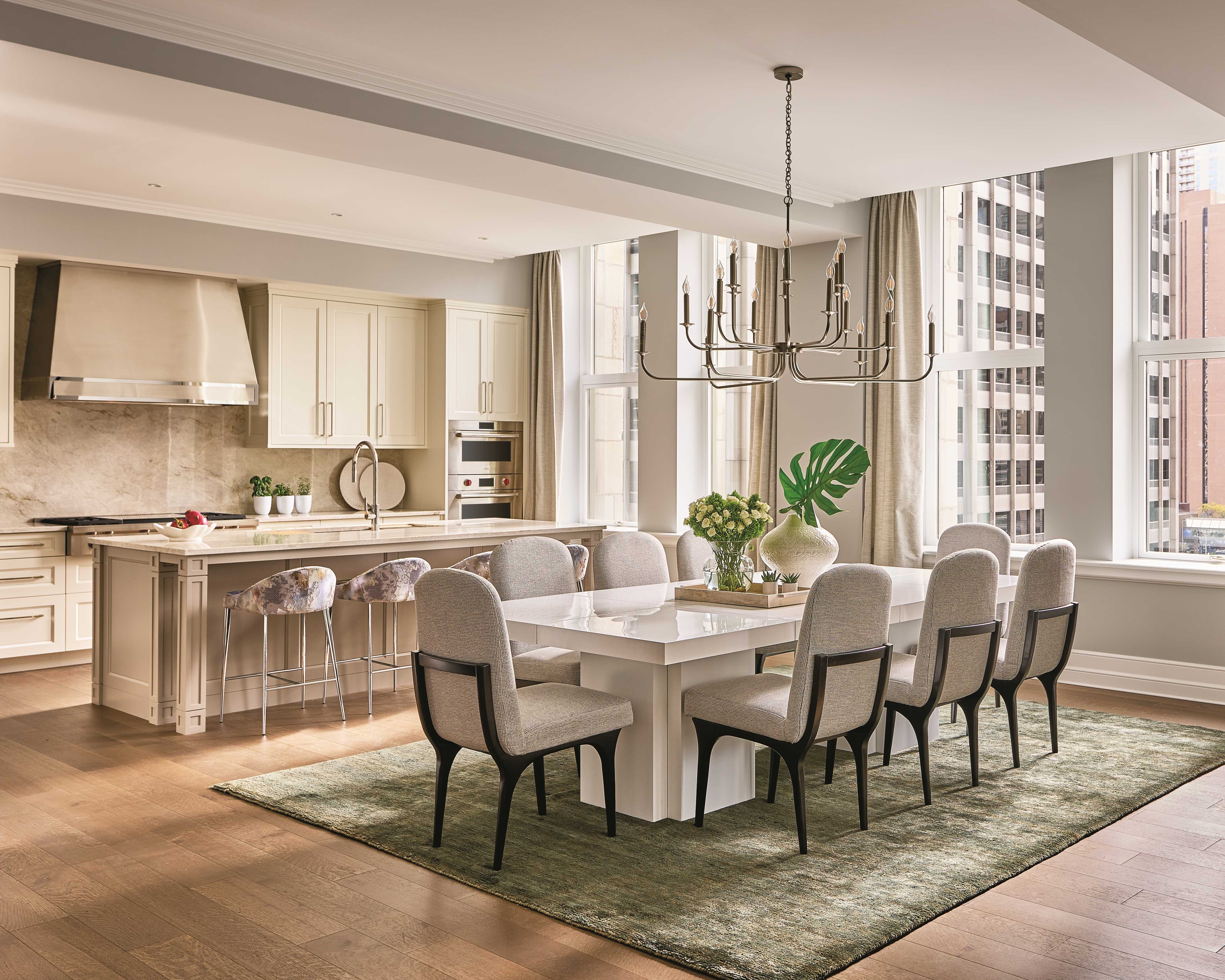The business of home staging is under transformation. Though physical staging has long dominated the market, virtual staging is quickly becoming a go-to option, but whether it’s the better option depends on several factors.
Key takeaways:
-
Staging helps highlight a home’s space and architecture and appeals to the broadest buyer market.
-
Virtual staging is coming up quickly, offering a lower cost, more flexibility, and a shorter timetable than traditional staging.
- Help sellers decide which option is best for them by looking at factors like budgets and timetables.
When Barb Schwartz introduced the concept of home staging in 1972, inspired by her background in theater, the idea was novel.
Instead of having buyers view rooms as homeowners had lived in them, salespeople removed any contents—from art to furnishings—that cluttered, dated, or personalized spaces. This purging made it easier to see a home’s architecture and scale. New buyers, it was thought, would have an easier time envisioning themselves in the space.
Traditional staging is a costly but effective way to showcase the architecture and potential of a room
The concept gained a following, as well as sophistication in process, and led to a profession of trained specialists. With their arsenal of furnishings, baubles, and art, these specialists made a job of staging homes to sell. Sellers usually paid for the service, since many staged listings sold faster and for higher dollars than those not staged.
When Demand and Competition Increase
Nowadays, staging has become almost de rigueur, and professionals with the skills are experiencing an uptick in business. Professional organizer Amanda Wiss of Brooklyn-based Urban Clarity added staging to her repertoire and has seen her business grow by 80% over the prior year.
A traditionally staged kitchen
An increase in the demand for staging also translates into an increase in higher expectations from the clients. To stay relevant in a competitive market, stagers have come to spend more time and money to fashion staged rooms that outdo one another. What’s more, stagers must have a well-rounded and working understanding of what’s necessary to fit a property’s architecture, location, and trending decor. From clean contemporary to mid-century modern, and farmhouse, stagers need to know it all, says Beth Franken, broker-associate with Berkshire Hathaway Home Services in Chicago, who earned staging credentials from industry trainer ASP.
The increased competition has also spurred stagers to charge more, sometimes 8% to 10% of a listing price, though this varies based on the work involved.
Wiss recently staged a listing in the New York City area with multiple bedrooms and charged in the mid-$20,000 range, and just like when the staging trend originally picked up steam, sellers are still paying for the service.
The Rise of Virtual Staging
Of late, staging has evolved to include the digital realm. Now, rather than physically staging each room in a home, virtual staging allows a company to use a program to map out the home and choose proper furnishings for the space. The increase in the virtual option is due in part to a few factors, including:
- Advances in technology that produced more realistic results
- The influx into the marketplace of millennials, who are more comfortable shopping online than any previous generation
- The pandemic, which made looking at homes online more popular to keep everyone safe
More companies specialize in virtual staging nowadays, allowing salespeople or homeowners to pick from an expanding library of design choices. Want a mid-century modern room with Herman Miller furniture? Check. How about a modern Italian look? No problem.
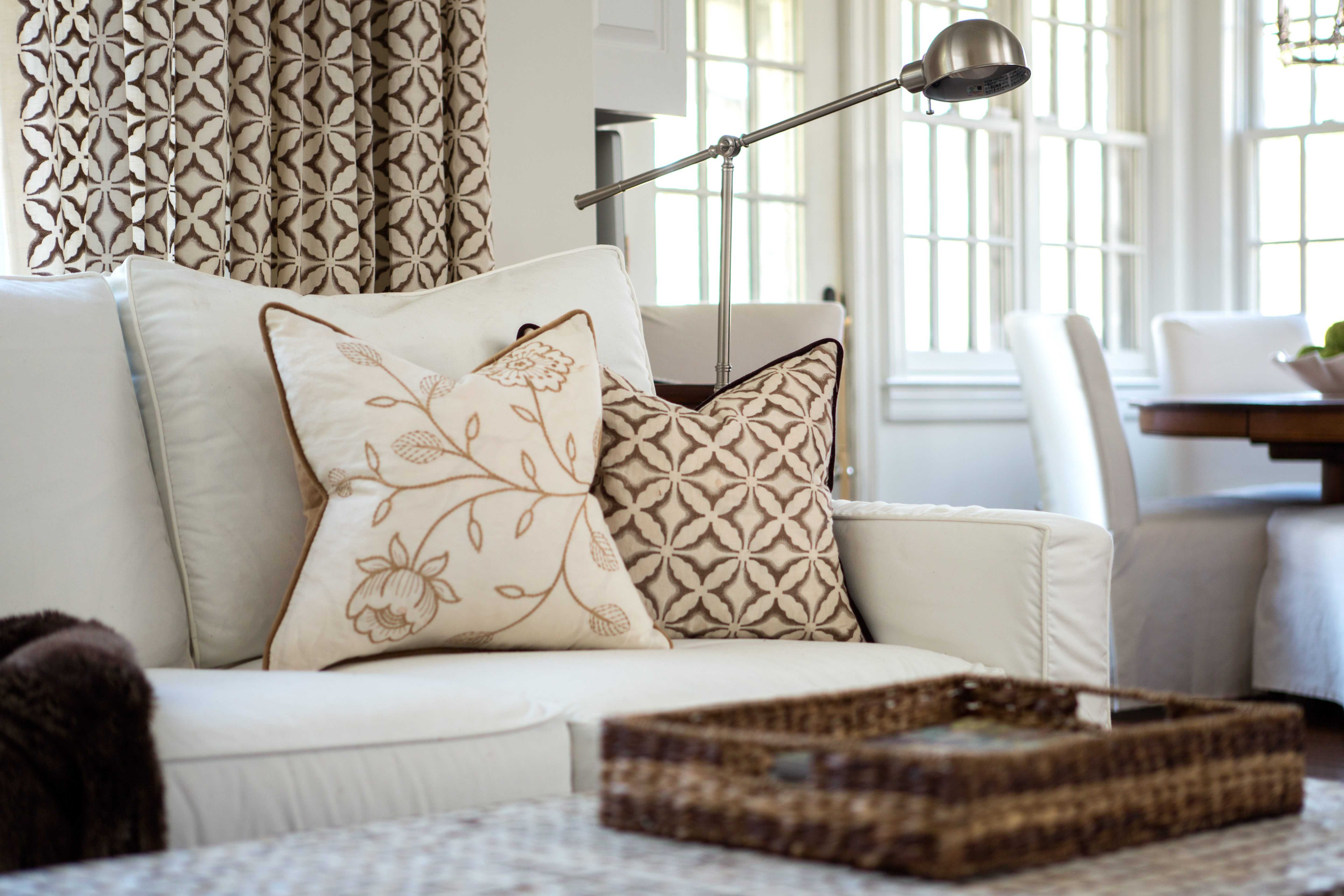
In some cases, stagers digitally remove furnishings or decor like wallpaper. To make it clear to prospective buyers that the space might not look exactly as it does in the virtual staging, however, salespeople attach a “virtual design” disclaimer, so there’s no misunderstanding.
Cost-Friendly and Adaptable
Virtual staging offers flexibility new to the industry. The time saved over using a truckload of furnishings also makes it more sustainable, says Atlanta-based salesperson Christopher Matos-Rogers with Coldwell Banker. The price skews far lower than physical staging, spurring more practitioners to pick up the tab as part of a marketing budget, says Ilaria Barion, founder of Barion Design.
Since 2005, Barion has staged more than 50,000 properties and is focused on the luxury market. She switched from working as a physical to a virtual stager in part because of the specific needs required in the luxury space.
“Unless you’re going to spend a lot of money, the rental furnishings may cheapen a property’s look. The cost of luxury home staging has skyrocketed. It also takes time to assemble the furnishings,” says Barion. The sheer number of people searching for homes online—95% of home shoppers, according to
a report from Properties Online—makes virtual staging a useful option.
Before virtual staging
Also, on the plus side, she’s found that virtual staging allows “you to do amazing things and fast—move in a baby grand piano, for example.” Her company charges per photo, taking into consideration the size of the room. Clients can expect prices from $49 to $399. If furnishings need to be digitally removed from the space, it charges between $20 and $90 per image. Additionally, and unlike in physical staging, Barion’s company typically delivers within a few days.
Thanks to virtual staging, Barion also offers a special custom staging service from scratch. With this service, she offers renderings, and she can offer an express service that’s less expensive for small dwellings.
After virtual staging
BoxBrownie.com, an Australian digital staging firm that also performs photo edits and redraws floor plans, charges even less—$24 per virtual image with a turnaround of 48 hours for a new design. It will remove images within 24 hours. The firm, the pitch battle winner at NAR’s inaugural Investment, Opportunity & Innovation Summit in 2018, also has a large inventory of photos in different styles, says Tabitha Thomas, general manager.
Some companies work both ways, as does Atlanta-based No Vacancy Staging. The company charges $39 per virtual photo if the salesperson or homeowner opts for self-service. If they seek advice, the cost is $60. It also offers a two-business-day turnaround and can provide an online quote and contract within 15 seconds, says co-founder Krisztina Bell. As different spaces in a home take on greater importance, it stages them, too, such as more outdoor areas, Bell says.
Virtual staging also offers the advantage of presenting variations on the same space to show flexibility. Throughout the pandemic, buyers have wanted to see that a space might function as a home office, classroom, or gym.
Choosing the Right Staging Option
While its popularity trends upward, not everyone’s convinced that virtual staging is always the best choice. Some experts recommend studying a potential hire’s portfolio to see if they offer adequate digital choices and professional quality software and photos that accurately portray dimensions, perspective, and scale, Franken says. “Some images look fake,” Barion says.
Traditionally staged bedroom
Conversely, some digital versions are so persuasive that, after seeing photos online and later entering the home, buyers are disappointed by seeing empty rooms or the seller’s furnishings instead.
“It may initially raise buyers’ expectations and set them up for a let-down when they see rooms in person,” says Kristie Barnett, whose Nashville firm, The Decorologist, runs in-person and online staging seminars through her Expert Psychological Staging firm.
In contrast, she feels that traditional staging makes spaces appear larger and more valuable. “Done properly, it puts the emphasis on the selling points (the architecture) rather than the decor, and helps buyers know how their furnishings will fit by seeing how comparable items look,” she says.
Which route to go may also depend on the age of potential buyers and how they like to shop, says Chicago commercial interior designer Mary Cook of Mary Cook Associates. Cook has merchandised thousands of model homes and apartments for discerning builders and developers of residential properties.
Before virtual staging
“Many millennials are very comfortable shopping for a home or apartment using virtual reality, digital renderings, or virtual walk-through renditions online, and even buying without stepping foot inside. But that’s very different from how many boomers like to purchase. They want to see rooms and furnishings in-person to know what works,” she says.
For example, she cites the repurposing of the Tribune Tower in Chicago, which transformed from offices to condominium residences. “Initially, the developer opened for sales before the model units were complete. Potential buyers were interested, but once furnished models opened, sales quickly accelerated. It made a huge difference for the older age group buying to see how rooms might be used, including turning a massive foyer into a gallery,” she says.
After virtual staging
Salesperson Franken had a similar experience taking over a condo listing in Chicago’s Hyde Park neighborhood. It was virtually staged and sat unsold. Franken decided to use contemporary furnishings she collected to physically stage the home. “I charged the seller $2,700 and dropped the listing price $6,000. It sold within four days,” she says.
But those like Bell of No Vacancy Home Staging say there’s room for both approaches. “Virtual isn’t meant to replace home staging but [to] offer another option. Both have evolved and will continue to do so,” she says.
BONUS: Starting the Conversation
One of the toughest parts of the staging process is starting the conversation with sellers. It’s not easy to ask that they remove all or some of their objects to make space for new furnishings, especially if they’re still living in the space. “Many are still reluctant, and you have to be careful never to say anything that’s insulting or seems a putdown of what they own,” says salesperson Beth Franken.
Traditionally staged living space
Instead, she suggests using stats and stories to share how staging can help before listing a house. “You can’t put something on the market twice,” Franken says. Staging expert Kristie Barnett agrees. “First impressions are felt, not thought, and take place almost instantaneously when someone enters a property.”
Both also suggest pointing out simple staging ideas that a salesperson or homeowner can do on their own:
- Get rid of what won’t be moved to the next home.
- Use hangers that match.
- Remove about 60% of the items from closets and bookshelves.
- Declutter glass-fronted cabinets and counters in full view.
“The eye needs to have an uninterrupted take on a room, and too many things, patterns, and colors distract,” Barnett says.
Showing photos of staged homes makes a significant difference, says salesperson Christopher Matos-Rogers. He uses his area MLS to pull up examples of other listings in their neighborhood that demonstrate how much better a well-staged, well-photographed home presents and performs. “Helping people see the difference is everything,” he says.


